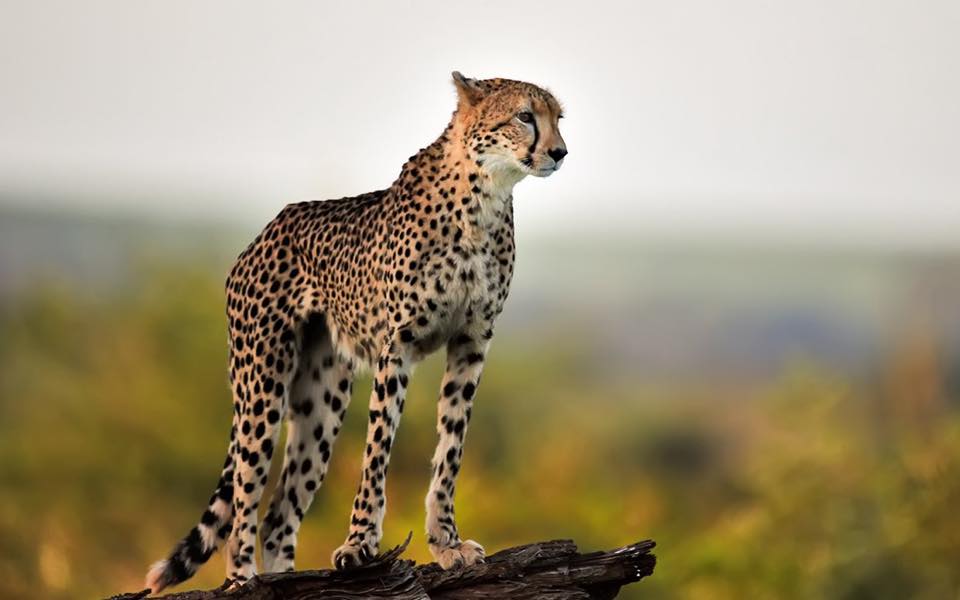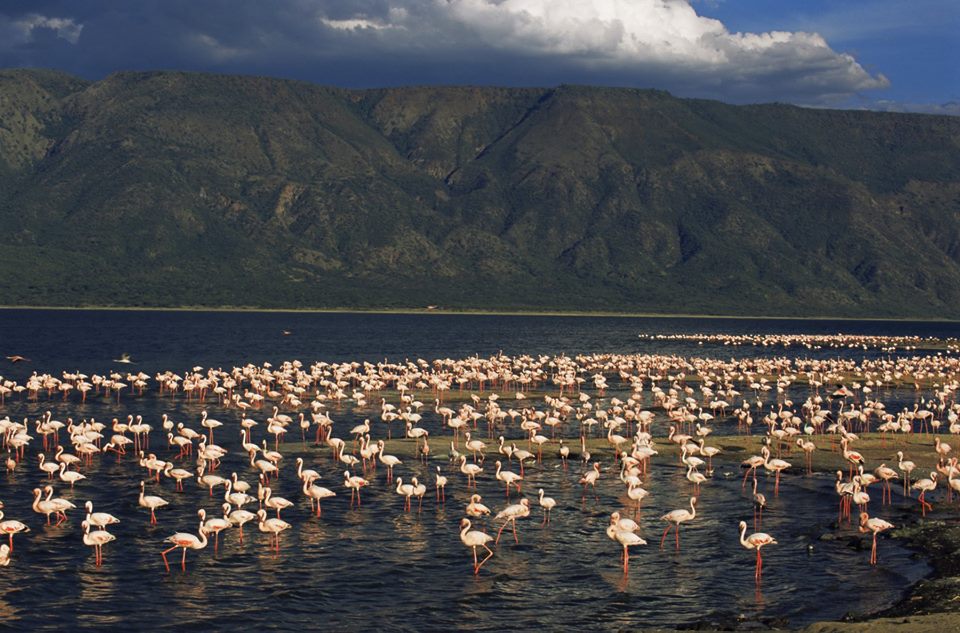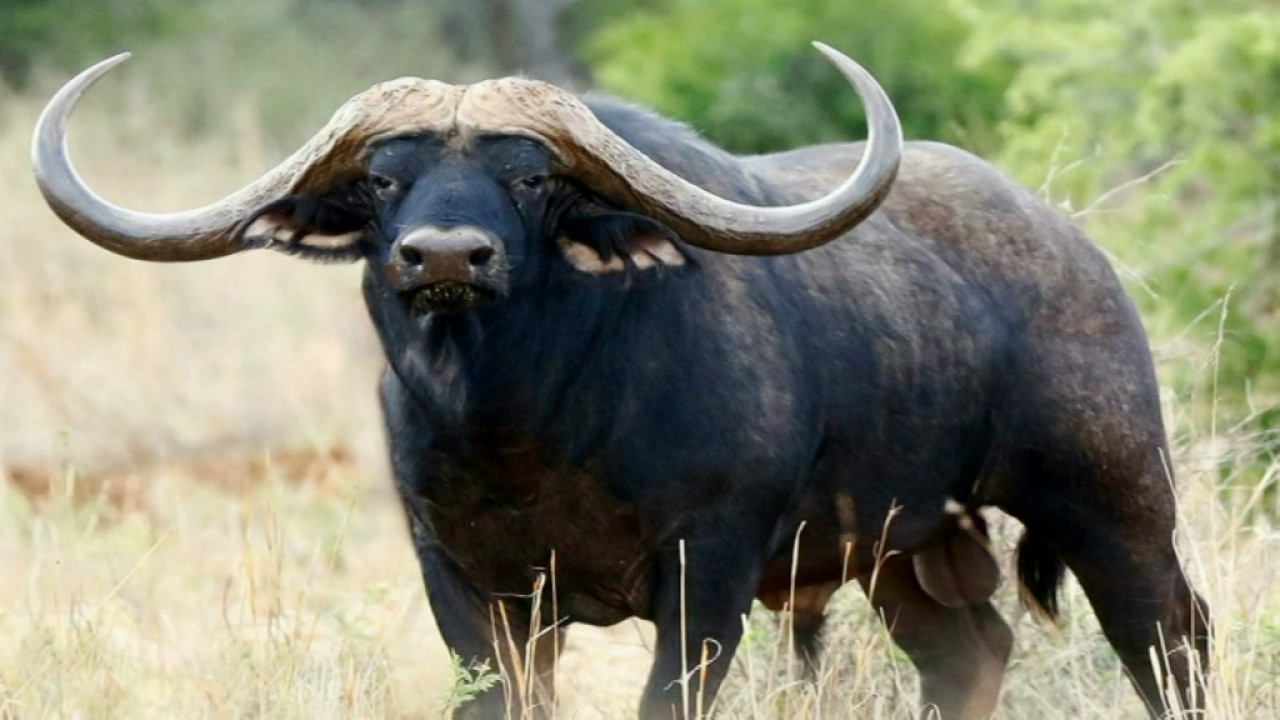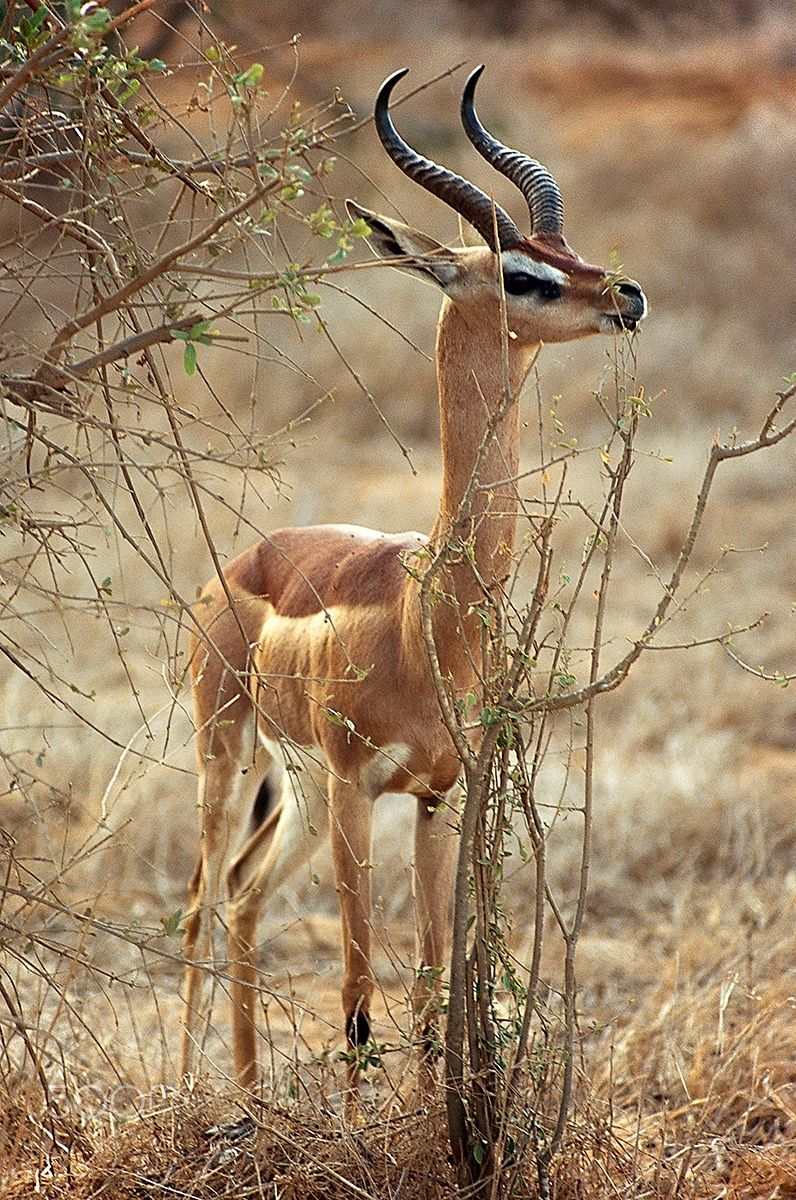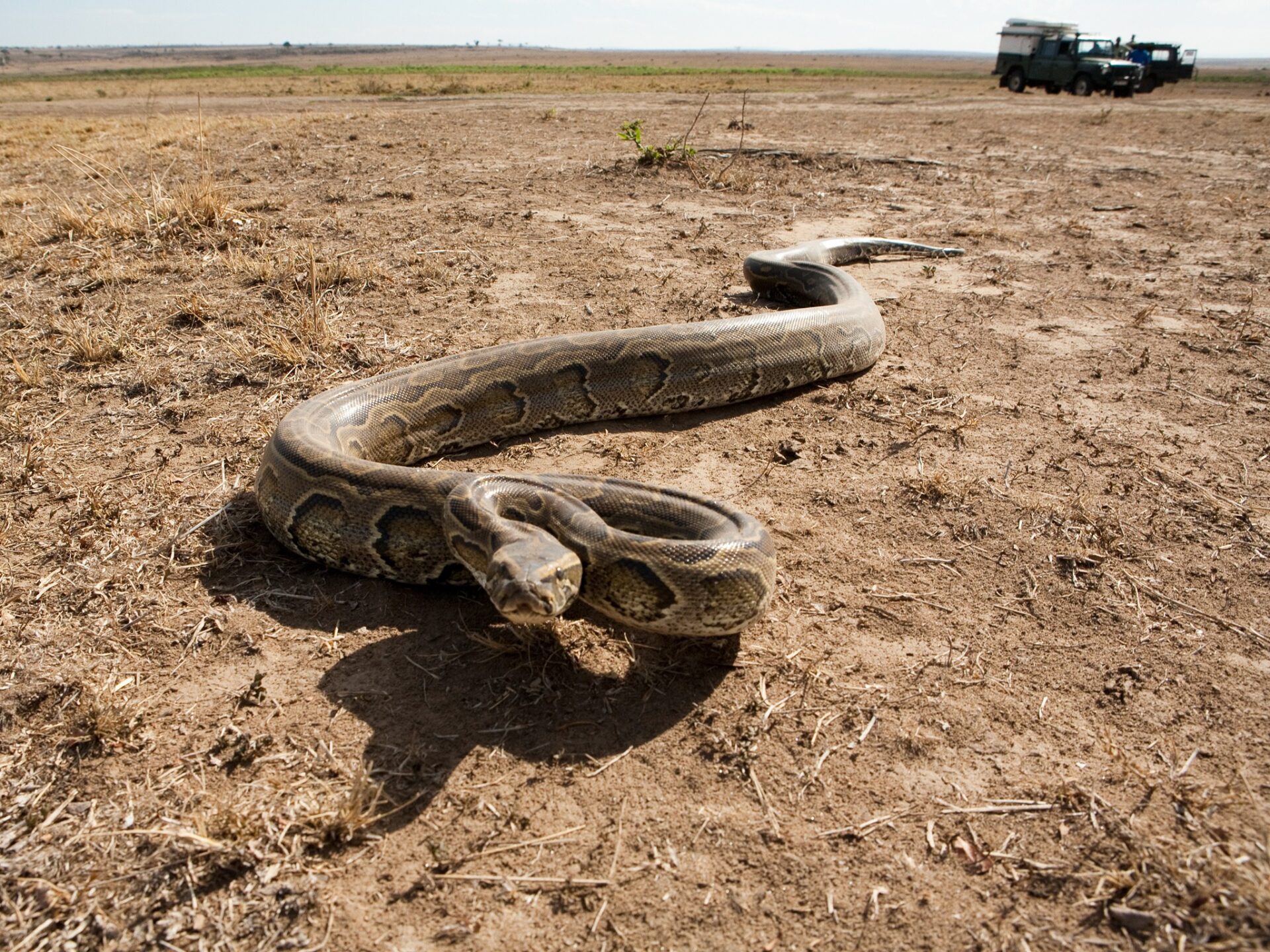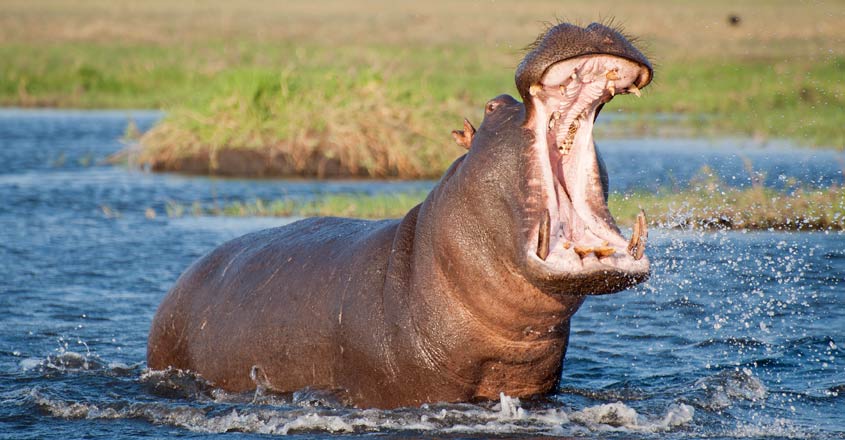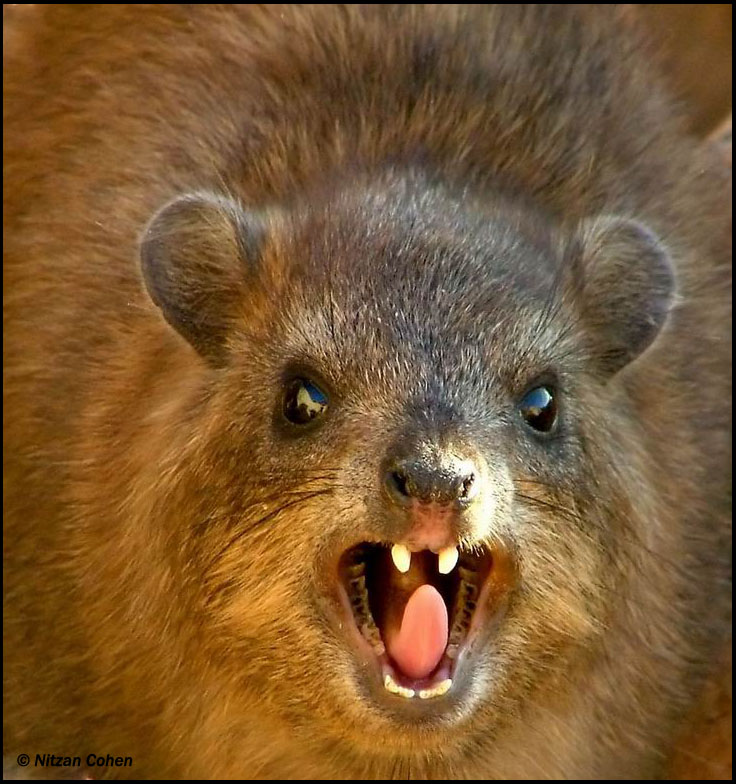The story of the Puff Adder
#KeWildlife - Story 18
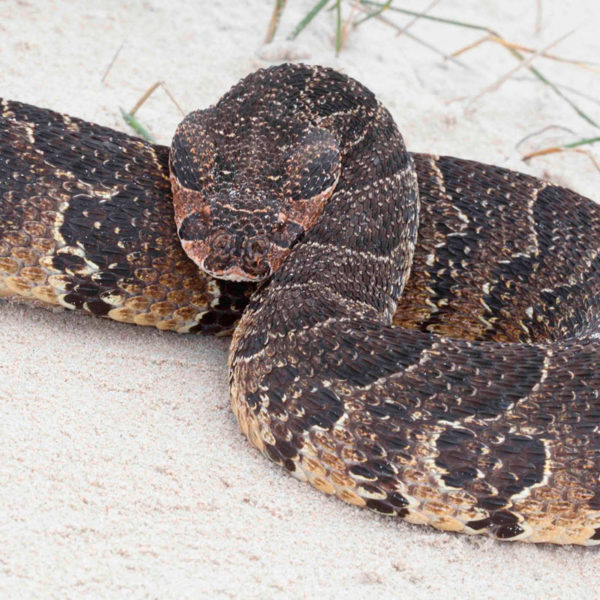
It feels good to be the most feared reptile in the world, especially because I don’t have to hunt as actively as some of the other animals I see in the plains. I take pride in my appearance: scaly body and my ability to slither to wherever I please, my ability to sense an animal, whether near or far – depending on what I choose to focus on, and my fangs – yes! These sharp teeth that take effect on my enemies and my meals – I most certainly appreciate them.
But perhaps you’d like to know how I get to eat despite my renowned laziness.
It’s pretty simple, I wait for my food to come to me.
I take up my ambush position near a scent trail, ensuring that my hideout is secure enough for my body to camouflage. The advantage I have is that my eyes are very good at detecting movement, and rather than hearing sounds, I pick up vibrations using the skin around my jawbone. In order to get accurate vibrations, I have to place my head on the ground – (in doing so, vibrations are amplified enormously). I then target my prey using my sense of taste and smell. When it finally lures itself towards my radius, heat sensitive cells within my lips become stimulated by my prey’s body heat. At this point, I need to have uttermost self-control, because I need to remember that my patience is what helps me get my food.
My system almost works like a computer. When all these senses are put together and my brain processes them, I move swiftly and bite the animal on site. My fangs pierce the animal and release venom. Thereafter, I release. I use my venom as a hunting aid: to mobilize or slow down the prey, rather than to kill. At this point, I’m content for my prey to escape.
You might think I’m crazy to let the animal get away, but trust me when I tell you when my venom gets into the prey’s system, it won’t go far. All I have to do is wait for the venom to take effect. Unbeknownst to my prey, it has left a trail behind that only I can detect. I capture this trail with my fork tongue. After a time, I follow the trail to my meal and enjoy the feast of the dead animal.
-
The Puff Adder is the most widespread venomous viper snake species found in African savannah grasslands. The snake’s colour pattern varies geographically, varying from yellow, light brown and orange, overlaid with a pattern of a darker brown to black chevron shaped bands.
These deadly animals are known to inject their prey with venom. A puff adder bite causes immediate severe pain, and it is responsible for the majority of snakebite fatalities in Africa. We strongly advise that you stay away from this animal – as interesting as it may seem.
The Story of the Cheetah
#KeWildlife
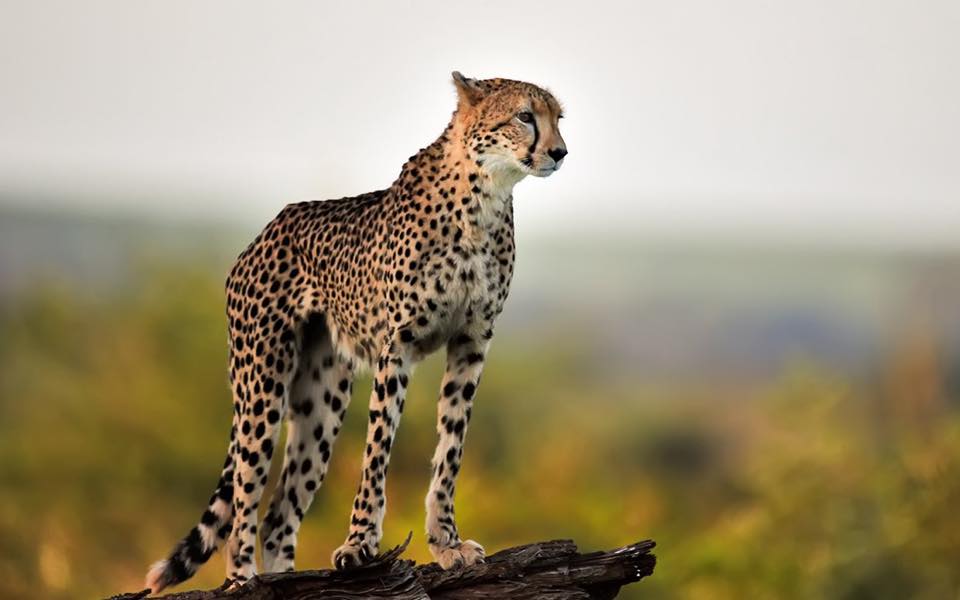
The season was unbearably hot. Each day my two brothers and I would move across the plains searching for any hint of shade to protect us from the unrelenting heat. We were now grown which meant we were on our own, no longer part of our mother's pack. Life had been fun at first after leaving the pack, finding new territory, chasing down diks diks and then larger antelopes. Life was easy, when we weren't hunting or recovering from the fullness of the hunt we would take the time to explore. Ravines, waterways, mud holes, enjoying the view from the branches of an acacia. Simple days.
Perhaps life had been too easy, as we found ourselves moving further and further away from the grasslands we grew up in. From the banks of the Ewaso Nyiro in Samburu, we moved west into Shaba. Maybe we should have taken into account the stark changes in the terrain as it became drier, rockier and more desolate as we moved towards the land of the sun rise. But young turks live for adventure and a chance to prove oneself.
Weeks later we were too far east to consider going back. We knew what lay behind - stones, empty river beds and no food. Forward was the only option.
It had been three days without sighting a single gazelle. We were confused but perhaps the strange noises and smells we began to witness held a clue. Smoke and harsh sounds were intermingled with the smell of goats. Was there hope for our bellies if we could overcome our fear of the predator called man?
On the fifth day my brothers decided to try to secure a goat, they had prowled around scouting for two nights and knew they were held in the same place each night. I pleaded with them to reconsider but they scoffed at me taunting me with the word coward. That night they set out and within and hour they were back .. each of them dragging a young kid by the throat. Hungrily we fell upon them, ravenously tearing each animal from limb to limb.
Three nights later out they went out again and returned once again with a bounty. It felt so good to be full again.
A few days later and it was time to eat once more. This time they said, I would need to take part. We left in the middle of the night, the tantalizing smell of goat leading us to the enclosure. It was nearly dawn by the time my brothers and I got there. It seemed that the fence had been strengthened and I watched them search frantically for an opening, scratching the bamboo with claws to bring the weak rootless trees down.
Finally one, then two stems broke and were pushed them in, my brother paid no mind to the sounds of the tree bark shattering. He crept through, each of his bony shoulders squeezing by the shards in the fence. The goats became hysterical in their bleating - clearly they could smell us, and our intent. Just as I got past the fence we heard a great commotion.
Man was awake!
We scrambled back to the fence, I could sense my brothers agitation as I tried to squeeze through. Finally I was through, but had to make sure they made it out as well, they couldn't be left to the fate of man. Finally one then two were out and we were off, the wind beneath us as we loped off into the bush.
We knew no one could beat us, on the terrain at our top speed, we were in our element. This is where my brothers and I were kings.
As we ran we heard the noise of the men behind us, together with the guttural sound of the ship on wheels. In no time they were upon us, and we were losing our top speed. We veered hard into the wilds but the dryness of the plains afforded us no cover. We were completely exposed against the dark rocks and red sandy soils.
The heat began to wear me down. I could feel myself losing ground and could hear the men who were gaining it behind me.
My muscles, which had wasted away in the preceding weeks were letting me down. I could hear my heart pumping each time I stretched out my legs in a bid to swallow more ground.
I stumbled and lost my footing and my gait was thrown off balance. I tried to recover but it wasn't with the speed I was used to. If my mind could make me run faster it would, but alas...
Suddenly I felt something hit my legs with a burning sensation. There was no time to figure out what it was. I had to keep going but by now I was a shadow of myself, running as slowly as a warthog.
Again, a lashing feeling around my feet making me trip and roll over into the dusty rocky ground. I could hear them all around me now... men shouting their unintelligible sounds, mocking me as I staggered to my feet trying to find a way out go the circle.
I felt a rock hit me and I yelped, but I didn't see mercy around me, only anger in the eyes of my captors. I tried to look out for my brothers but I couldn't see them anywhere. I snarled at the men as they grew closer hitting me with stones.
In my mind I thought of my weekly prey and wondered if this was the bewilderment they experienced in the final moments before my teeth sank into their throats.
They circled closer signaling to each other with sounds and gestures that I didn't understand.
Finally I saw a rope thrown across me and my legs collapsed as the noose tightened. Confused I felt my legs belted together. I was captured in the most humiliating of ways, with no knowledge of what would happen next.
I closed my eyes, wearily into surrender.
******
Cheetahs are the world's fastest runners. With a top speed of 112 kph the cheetah can outrun most of its prey. However it can only maintain this top speed for about a minute meaning it's hunting style is tactical and swift.
Cheetahs are classified as an endangered. Less than 1300 can be found in Kenya, which is one of its primary habitats. Known for its loping walk and sharp shoulders, the cheetahs' coat is tawny with black spotted markings and a plain white underbelly. Many folklore tales tell of the origin of the cheetahs tears, marked on their faces from eye to mouth. Adult cheetahs weight between 24-34kg and they live in packs until the cubs are weaned.
Cheetahs can be found in the Maasai Mara, Tsavo, Samburu and Meru national parks. The current drought has caused cheetahs to venture into human settlements for their prey as was experienced in March 2019 in Wajir county where two cheetahs were chased down by six men and handed over to the Kenya Wildlife Service.
The story of the Flamingo
#KeWildlife – Story 16
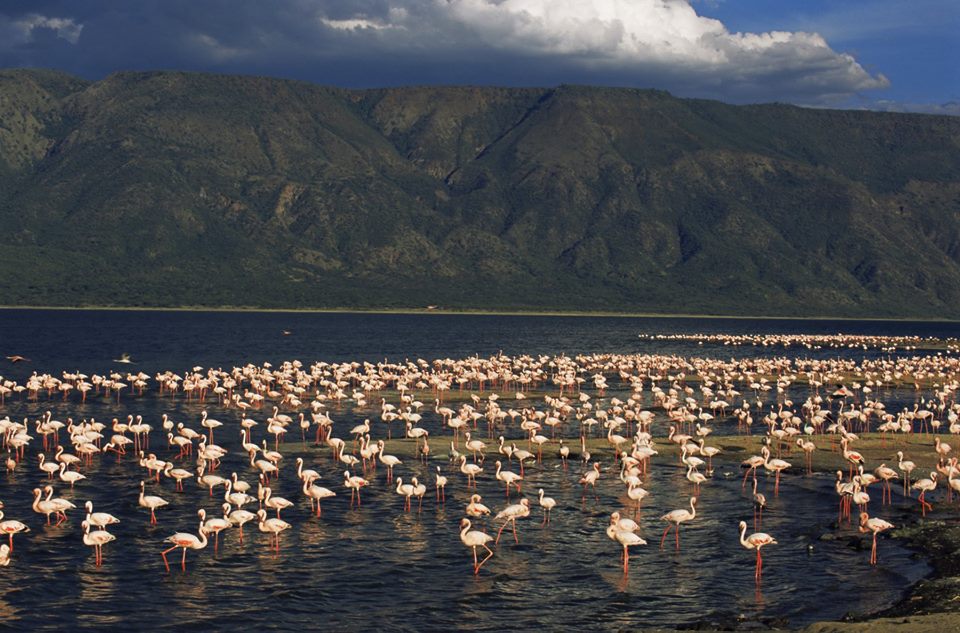
There are certain places that are known for something special, and Lake Nakuru is one of them. Its hard to think of the lake without the iconic pink birds that are synonymous with it. Flamingoes or more specifically the Lesser Flamingo whose claim to fame is that they are the most numerous type of flamingoes in the world are beautiful birds that are spread across the Rift Valley and can be found as far away as India. But our region holds a certain magicfor this long legged creature - Lake Natron and Lake Magadi are the primary breeding grounds for these important birds and without the lakes….no flamingoes.
But back to Lake Nakuru. Did you know a couple of years ago the lake started expanding? Somehow this expansion from underground sources upset the delicate balance of the water ecosystem resulting in less algae available for the daily consumption of the thouands of birds living there. And so a massive migration of the lake’s iconic birds to Lake Bogoria, a little further north in the great Rift Valley took place. So now if you want to witness the glory of a million flamingoes gliding over the lake or creating a massive pink cluster covering blue water the hot waters of Lake Bogoria is the place to do so!
One last thing before we go – did you ever wonder where the flamingo gets its beautiful pink hues from? Interestingly, when it hatches it’s a bluish grey in colour. However from the time it starts feeding on life-giving algae a transformation begins. Eating algae which are full of carotenoids, infuse our flamingo friends with their distinct colour as they grow. Who would have thought excess consumption of algae would be colourful for your health?!
The story of the Buffalo
#KeWildlife – Story 15

The large vehicle was parked by an Acacia tree in the middle of the grasslands. The driver paid no mind to the trail he had left behind. He had bigger things on his mind. Dressed in khaki shorts and a green shirt, he stepped out of his Land Cruiser, adjusted his safari hat and examined the land.
A few zebras grazed in-between a herd of wildebeest in the distance. Giraffes stood tall further away against the few trees lining the horizon, and the water of a little dam glistened against the midday sun. The man adjusted the laces of his safari boots and strapped his firearm against his chest, then began his long walk to the thicket two kilometers away.
He arrived in less than half an hour, despite the sun’s efforts to wear him out. Tenacity was his motto, and to return to his homeland with an elephant’s tusk? He’d be the richest man in his country, if not the continent.
“Magical Kenya they say,” the man said to himself as he spotted the large elephant approximately 500m from him. He chuckled at his own words and stared at the large beast in both awe and greedy desire.
Then, he unfastened his firearm, set the bullets and then lifted the gun to his shoulder.
The beast stood still, unaware of the nearness of its death while the man tried to decide where to shoot at first - the elephant’s legs or abdomen. He settled on the abdomen – four shots and the beast would collapse.
He counts.
"Ready, set…."
Suddenly the ground shakes. The man is caught unaware, and his firearm drops from his loose grip. Something runs in the bush around him. He hurriedly picks up his firearm ready to put an end to whatever beast has interrupted his hunt. He waits, as silence ensues.
Just then, out of the thicket, a massive animal comes running, its head bopping up and down. Horns? The man can barely make them out. He feels a sharpness against his ribs, then another. The man falls to the ground – firearm still in hand.
-
You see the thing with the African Buffalo is it senses danger from a mile away. It seems like an unlikely attacker if you judge it at first glance, but its defence against enemies and intruders is mounted squarely at the top of its head; horns longer than a man’s arm. If provoked, it lowers its head and pierces its opponent. Much like the elephant, the buffalo isn’t a predator but an animal that gets overly aggressive when enraged – and when it attacks, the opponent’s only hope is speed.
Woe unto you if you come across the lone buffalo. Considered one of the most dangerous animals in the wild, even its own kind steer clear of him.
The hunter in the story above lies on the ground sprinkled with dust. The buffalo has done what it needs to do to protect his territory.
It’s no wonder this ferocious animal is one of Kenya’s big 5 – a true ambassador of defence!
The story of the Gerenuk
#KeWildlife – Story 14
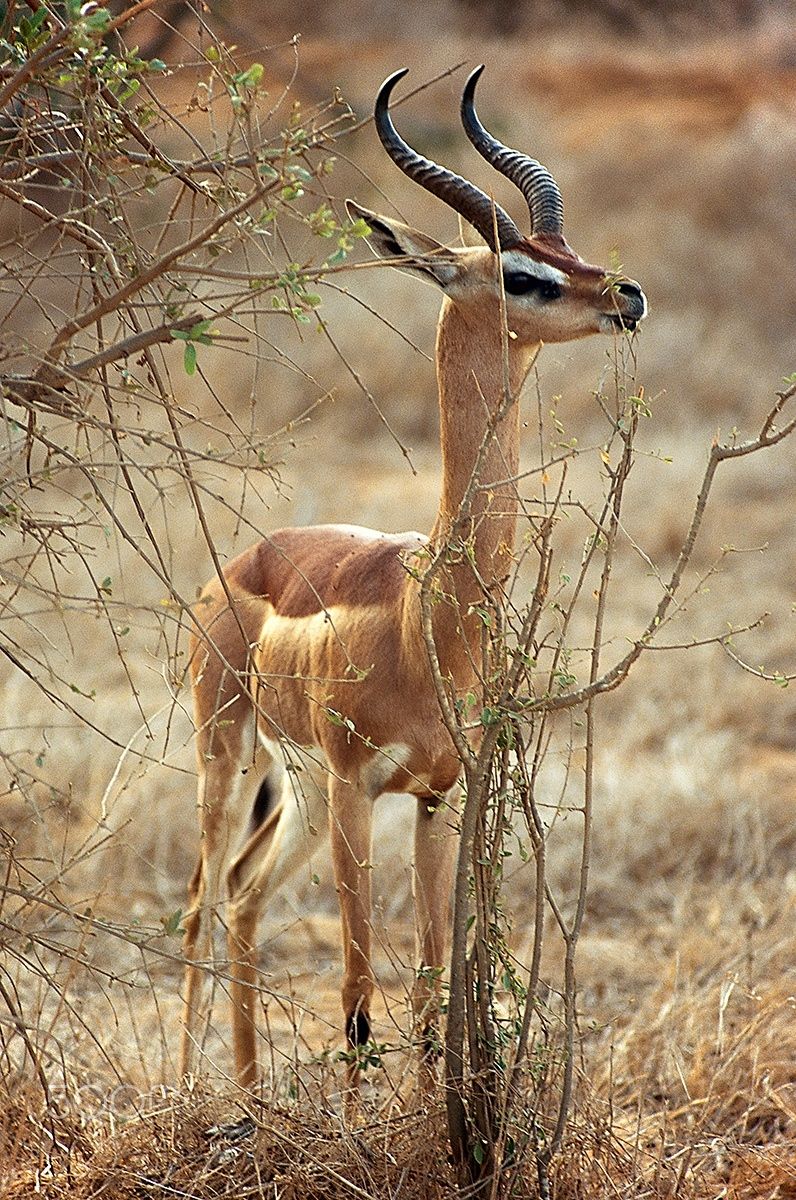
A Waller’s gazelle is something else. For starters, it is long-necked – a copycat of the giraffe to some extent. Its neck extends ahead of its body. Then, it is muscular and evidence is in its strong limbs. Above this, it has a smooth fur ranging from dark brown on its back to light brown on its sides. Its gallop is ever so graceful, boasting its uniqueness to its cousins – the gazelles.
You may have come across this wildlife at the Samburu National Reserve where it is among the famous five of the area albeit by another name.
Gerenuk is the other name given to this interesting gazelle species, but did you know that this word (Gerenuk) is actually Somali? Meaning ‘giraffe-necked’?
This animal is described as long rather than tall because of its neck and limbs that contribute to its exquisite nature. Another long feature is its snout, which is pointed – enabling it to eat the small leaves on thorny shrubs and trees. While we’re on the subject of trees, this antelope species is the only one that can reach taller branches and stands on its hind legs to do so. The manner is rather unorthodox but unique nonetheless.
The male Gerenuk is distinct in that they have heavily ringed 17-inch horns and a toned neck compared to the females. Interestingly, during gestation, the male’s neck can swell significantly. While the female stands between 80 and 100cm, the male stands between 85 and 105cm.
A common feature between this animal and most gazelles is the pre-orbital glands in front of the eyes that emit a tar-like, scent-bearing substance they deposit on twigs and bushes to mark their territory. Given that its home is in the drier area of our country, this animal survives on little water if none at all.
The gerenuk lives in a small herd of up to 10 gazelles. They are shy animals, so for the photographers that are looking into wildlife, this one requires patience and a good lens for the perfect shot. If you have the patience and long to see this beautiful species indigenous to Kenya, Ethiopia, Somalia, and Tanzania, we suggest a trip to Tsavo National Park or Meru National Park, but the Gerenuk is in plenty in Samburu.
The story of the Rock Python
#KeWildlife – Story 12

Grey, brown and bronze: a canvas of a unique kind, irregular spots blotched all over, and a triangular shaped head. One of the more distinctive features is the set of sub-ocular marks under its eyes.
An African Rock Python is both fascinating as it is deadly.
As the name suggests, this snake is indigenous to Africa and is one of two subspecies of the Rock Python. The second being the Southern Africa Rock Python found in some parts of Tanzania and in the southern region of our continent.
The automatic assumption when it comes to these scaly creatures is that one bite is all it takes to kill any person or animal, but while most snakes are venomous, the African Rock Python is different. This reptile is so long and muscular, it kills through constriction. It will wrap itself around its prey until the prey can no longer breathe – death by cardiac arrest. Its strength is evident through its ability to kill animals three times its size. However, the most common kills by the python include bushbucks, antelopes, birds, and crocodiles. The python waits underwater for the herbivores to approach a lake and then it strikes almost aggressively, swallowing the prey head-first, whole. There are few stories of surviving animals once the rock python ‘attacks’. Large meals are said to take months to digest.
While that is common for the adult rock pythons, the smaller ones feed on rodents and birds that are easy to digest. The female rock pythons lay up to 100 eggs, which they safely keep in an abandoned cave against other animals including their own kind. The snake’s length helps protect its young ones even after they hatch for up to two weeks.
This wildlife species is also particular in that during the dry season, the animal is mostly dormant.
Some African Rock Pythons have been spotted around Lake Baringo.
The story of the Giraffe
#KeWildlife - Story 11
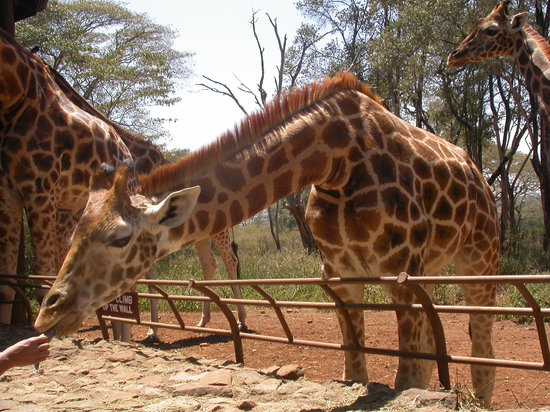
There was a time when giraffes had short necks. It was normal of course for them to look that way because their spots made them beautiful.
On one sunny afternoon, three giraffes were playing in a place with many tall trees. One of the three decided to get up to a branch to view the landscape, but because his neck was too short, he couldn’t. He asked his playmates “Why don’t you hoist me up so that I can see the world from the top of the tree?”
Although his friends were skeptical about helping their friend with his risky idea, they helped him nonetheless. One giraffe lifted the second giraffe, who then lifted the other giraffe. He got to the top and saw all the trees that were in his view, but before he could fully enjoy the scenery, the giraffe on the ground lost her balance and fell. The second giraffe, with no support, fell as well but the third who was at the tree top didn’t fall. Instead his neck got stuck between branches.
He started to cry for the pain was unbearable. The others, unsure of what to do, went to get help.
By sundown, the giraffe was still stuck between the branches as more giraffes gathered around to see the commotion.
“We must help him. We cannot leave him up there!” suggested one giraffe. All the others present agreed. In a great community effort, one giraffe held up another and the rest pulled at the tails of the ones in front of them. Soon, the group looked like an enormous snake of giraffes.
There was minimal signs of success but unbeknownst to them, as they pulled, the giraffe’s (stuck in the branches) neck got longer and longer and longer. They only noticed when he was finally on the ground.
The young giraffe looked odd, but he was taller than the rest – and could eat the green leaves on the branches. In an amazing twist, some giraffes followed suit, only this time they purposely got stuck so that the same procedure would be applied on them. Barely a fortnight later, all the giraffe had long necks and could wander around enjoying the green leaves and the landscape of their land.
There are presently three of nine subspecies of giraffes in East Africa: Reticulated Giraffe – also known as Somali Giraffe, Rothschild Giraffe and Maasai Giraffe. Giraffes are probably the most lovable of the wildlife species. They are often friendly and enjoy being fed at various parks and centres within Kenya. And although the story says that they once looked different, we certainly cannot imagine a giraffe with a short neck. Can you?
The story of the Hippo
#KeWildlife – Story 8

In ancient Greek, the word hippopotamus means river horse, which is undoubtedly an unlikely name for this enormous animal. While we’re on the subject of size, a hippo weighs 4,500 kilograms making it the third largest mammal on earth after whales and elephants respectively.
Hippos cannot swim which is surprising because they spend most of their time submerged in water with only their eyes above the surface. But perhaps you’d like to know why.
Paukwa?
There was a time when only animals roamed the earth. Africa was their main home and they lived amongst each other in peace. There were the animals of the land that ate the dead and others that are the leaves and branches of trees, then there were the animals of the water that ate little fish and reeds.
The land animals were known for their tough skin that would help them whenever the sun was at its peak. Although the heat would get uncomfortable, the sun rays never affected their skin. All but the hippopotamus.
The hippo’s skin lacked the strength to withstand the sun’s rays and as a result, every sunny day the hippo would be the most uncomfortable. For this reason, its skin became thinner with each passing day.
One day the hippo decided he wanted to cool his burning skin in the water and so he staggered to the nearest watering hole and asked the animals of the water if he could stay in the water with them.
“No!” the other animals said in unison.
“If we let you stay in the water with us, you will eat all our food and we won’t have enough,” said one of the water animals.
“I promise if you let me stay in the water to cool my skin, I will never touch your food. I will still eat my leaves from the land.”
The water animals were hesitant but they decided that they would only allow hippo to stay in water when he needed to cool from the sunshine. Hippo agreed to their terms and said that he would always open his big wide mouth so that they could see that he had truly not eaten the water animals’ food.
-
It’s interesting when you think about it. Today if you see a hippo’s wide mouth, it isn’t just showing the other animals that it has kept its word, rather it is warning its observer to stay away from it. With just one snap, a hippo’s canines can kill a human being. This makes it one of Africa’s most dangerous animals.
The hippo is often seen on land at night when it goes out in search of food. As for their inability to swim, these mammals stay by the edge of water bodies, where they can stand but stay in water to prevent their skin from the sun’s rays. They have the ability to close their noses and ears to prevent taking in the water, and can hold their breath for up to seven minutes.
The Tsavo East National Park, Meru National Park and Sibiloi National Park host this magnificent species and are accessible all year.
The story of the Rock Hyrax
#KeWildlife – Story 7
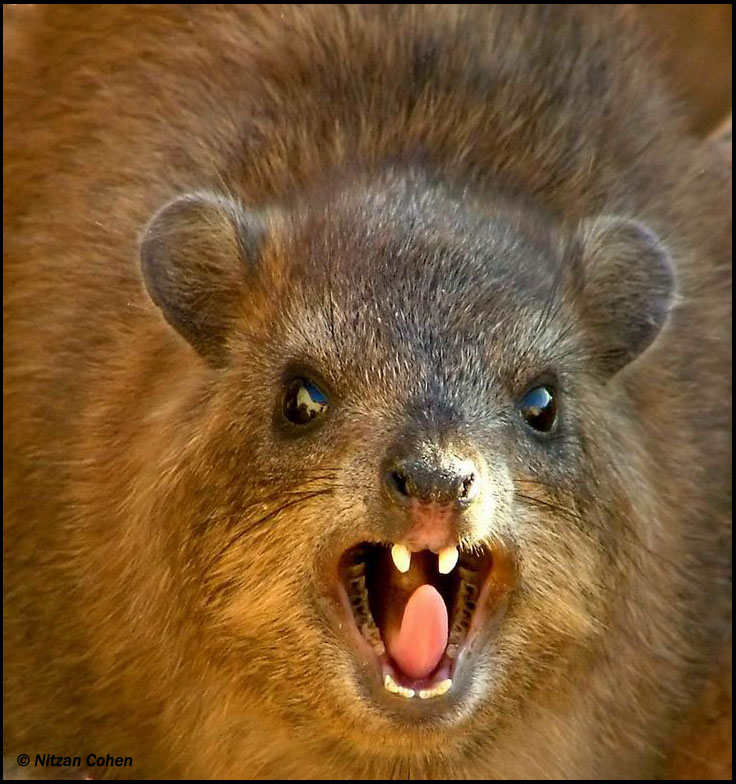
It’s said that over fifty million years ago before evolution took its toll, there were few species roaming the earth. As time went on and seasons changed so did the offspring of the species, and other species were born while others died or became extinct. Evolution of species resulted in the variety we have today.
One particular species that is common today is the Procavia capensis or Rock Hyrax or Pimbi in Kiswahili.
The rock hyrax is native to over 25 African countries and is the elephant’s closest living relative. One might wonder how a rabbit look-alike is related to one of the world’s largest mammals. Well, hear it from us, the hyrax and the elephant are relas!
Although the rock hyrax is small in nature, evolution history claims that the birth and death of new species from common ancestors plus the seasonal change is what caused the difference in appearance. Additionally, interactions with varying environments played a big role in affecting the species phenotypes – the outward appearance.
The order in which hyraxes and elephants evolved remains unclear because of the mitochondrial, molecular, and other genetic evidence points in more than one direction.
The rock hyrax is so small, it weighs slightly more than - if not the same as a newborn – between 2 and 5kgs to be exact. It has no tail but its feet have a rubber-like texture that helps them climb steep rock surfaces and trees. Speaking of rocks, that’s where this type of hyrax is mostly found – on the dry rocks of the savanna. Just travel to Taita Taveta county and you will spot a cluster of rock hyrax without even trying. They’re known to be in plenty within both the Tsavo East and Tsavo West National parks.
You may, however, need to carry a pair of binoculars because for a small animal, the hyrax moves at 18kph – but if you do come across a group lounging on a rock, they could be waiting for their cousins, the elephants, so that they can possibly hold a family meeting? We can’t be certain.


